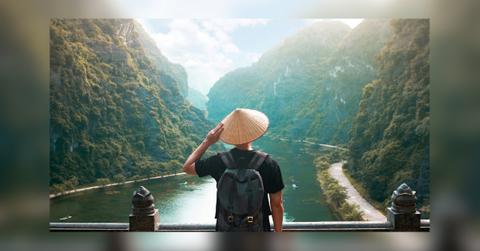
From Tourist to Traveler: How to Immerse Yourself in Local Culture Anywhere You Go
Traveling today is about more than sightseeing and snapping selfies in front of famous monuments. The modern traveler craves authentic, meaningful experiences — the kind that don’t come from a pre-packaged itinerary or a bus tour of crowded landmarks. Instead, the goal is immersion: to understand a place not just as a visitor, but as a temporary local.
Cultural immersion travel has gained popularity in recent years, and for good reason. It transforms a trip into a richer, more fulfilling experience. It also opens the door to personal growth, empathy, and a deeper connection to the world. If you're looking for strategies and stories to guide your cultural exploration, platforms like traveltweaks.com offer excellent insights to help you step beyond the tourist trail.
Here’s how to shift your mindset — and your travel style — to become a true cultural traveler.
Rethink Your Itinerary
Most travelers default to popular attractions because they’re familiar and easy to plan around. But real cultural immersion begins when you move beyond the “Top 10 Things to Do” lists.
Rather than filling every day with major sights, try carving out time to explore local neighborhoods, attend community events, or simply sit at a park and observe daily life. Choose fewer destinations and spend more time in each one — allowing room for spontaneous discovery and genuine interactions.
Stay Where Locals Live
Your accommodation choice can shape your entire experience. Instead of large hotels in tourist zones, opt for local guesthouses, boutique stays, or Airbnb rentals in residential areas. Staying in a neighborhood where locals live, work, and shop helps you see the everyday rhythms of life that travelers often miss.
You’ll likely find yourself chatting with neighbors, shopping at nearby markets, or being invited into conversations that reveal a more authentic version of the city.
Learn the Basics of the Language
You don’t need to be fluent, but learning a few key phrases in the local language goes a long way in building trust and connection. A simple “hello,” “thank you,” or “how much?” in the native tongue often earns a smile and may even open doors to deeper interaction.
Apps like Duolingo, Babbel, and Google Translate can be helpful tools, but even writing down a few go-to phrases before your trip shows respect and genuine interest in the culture.
Eat Like a Local — Not a Tourist
Food is one of the easiest and most rewarding gateways into a new culture. Avoid the chain restaurants and overly commercial spots aimed at tourists. Instead, seek out family-run establishments, street food vendors, or neighborhood markets.
Ask locals for recommendations, or better yet, join a cooking class or food tour run by residents. Not only will you eat more authentic dishes, but you’ll also learn about the stories, ingredients, and customs behind each bite.
Respect Local Customs and Traditions
Cultural immersion means not only observing, but also respecting and adapting to the traditions of the place you're visiting. This could mean dressing more conservatively, observing religious etiquette, or following social norms that may differ from your own.
Before you travel, take time to research key customs and taboos. This awareness helps you avoid cultural faux pas and demonstrates appreciation for the host culture, rather than entitlement or ignorance.
Get Involved in Local Activities
One of the most powerful ways to connect with a destination is to participate in its daily life. Consider volunteering with a local organization, attending workshops, or joining walking tours led by residents. Take a dance lesson, join a community cleanup, or participate in a festival.
Not only will these experiences help you understand the culture from the inside, but they also create lasting memories and friendships — the kind you rarely get from traditional tourism.
Travel Slowly and Stay Curious
Immersion takes time. It’s hard to fully experience a culture on a tightly scheduled 3-day trip. Wherever possible, slow down. Spend longer in each location, walk instead of rushing through in taxis, and be open to unplanned encounters.
Ask questions. Be inquisitive. Listen more than you talk. Some of your most enriching moments will come from conversations you didn’t plan to have or places you stumbled upon without a guidebook.
Leave a Positive Footprint
Being a culturally mindful traveler also means being a responsible one. Support local artisans rather than buying mass-produced souvenirs. Avoid exploitative tourism practices.
Choose experiences that benefit the community — financially and socially — rather than extract from it.
This respectful, intentional approach ensures that the destinations we love remain vibrant, authentic, and welcoming for future visitors. Even in your daily life back home, small decisions — like choosing eco-conscious products or supporting local services such as detailing in Calgary — reinforce a mindset of sustainability and respect.
Beyond the Guidebook
Cultural immersion travel is about more than seeing — it’s about feeling, connecting, and growing. It asks us to be humble, curious, and open to difference. It challenges us to move beyond the comfortable bubble of the familiar and embrace the richness of global diversity.
So next time you pack your bags, go beyond the guidebook. Get lost in a local market. Have coffee with a stranger. Attend a village celebration. You might arrive as a tourist, but you’ll leave as something more: a traveler with stories that no postcard could capture.
